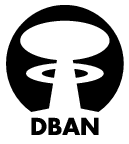 In a previous article we saw the basics of encryption and asymmetric key used in the e-mail. On Linux the most used and popular programthat deals with security and encryption is OpenSSL .
In a previous article we saw the basics of encryption and asymmetric key used in the e-mail. On Linux the most used and popular programthat deals with security and encryption is OpenSSL .
OpenSSL is an open source implementation of the SSL and TLS protocols. The core library (written in the C programming language) implements the basic cryptographic functions and provides various utility functions. Wrappers allowing the use of the OpenSSL library in a variety of computer languages are available.
Versions are available for most Unix-like operating systems (including Solaris, Linux, Mac OS X and the four open source BSD operating systems), OpenVMS and Microsoft Windows. IBM provides a port for the System i (OS/400). OpenSSL is based on SSLeay by Eric A. Young and Tim Hudson, development of which unofficially ended around December 1998, when Young and Hudson both started to work for RSA Security.
Today we will see some practical uses of programs that rely on OpenSSL.
Continue reading »

 It happens every now and then to have to do a complete cleaning of a system. Maybe you get a computer from an employee who is gone, or a server must be abandoned, or simply you need to reassign a computer and to be sure that all data are no longer readable in any way.
It happens every now and then to have to do a complete cleaning of a system. Maybe you get a computer from an employee who is gone, or a server must be abandoned, or simply you need to reassign a computer and to be sure that all data are no longer readable in any way.



